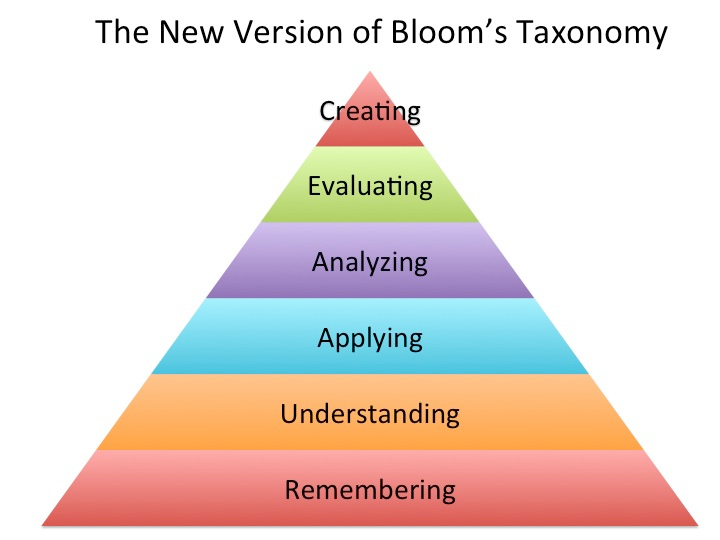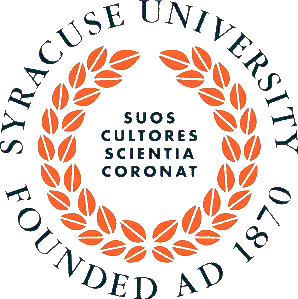Bloom's Taxonomy
As an educator, you are probably quite familiar with Bloom's Taxonomy of the Cognitive Domain. Benjamin Bloom and his colleagues at the University of Chicago created this taxonomy (and others for the affective and psychomotor domains) in the middle of the 20th century. Bloom's Taxonomy was slightly revised in 2000 and also has been applied to the digital age (we'll get to that a bit later).
Bloom's taxonomy identifies six levels of cognition on which we all learn. The lowest level of learning is the Remembering (recall of specific terms or facts) level. At this level, we may recall a definition or a theorem or a passage from a story. While this may be considered the lowest cognitive level of learning, each lower cognitive level provides the foundation for higher level thinking.
The second level is Understanding (making sense of what is learned). It is at this level that we are not simply memorizing information, we are understanding its meaning.
The third level of the taxonomy is Applying (using what is learned in a new situation or way). For example, if a student learns to use a particular database, she is also able to use other databases that may work similarly but not exactly like the first one.
As we get into even higher order thinking levels, Anaylzing is the fourth level. In this level, the learner is able to take a concept and break it into parts, understanding the relationship of each part to the others.
In the original version of the taxonomy (created in 1956), Synthesis (putting information together in new and innovative ways) was fifth highest on the taxonomy while Evaluation (making judgements/decisions) was considered the highest level. However, in the revised version (created in 2000), Evaluating has switched places with what is now commonly considered the highest of all cognitive levels (and its name has changed too):
Creating
Creating, of course, is the most frequent level on which young innovators operate during the innovation process, but their success is dependent on their command of the five lower levels. Creating requires divergent thinking and new perspectives, an understanding of related processes and how to apply them, a knowledge of relevant facts, and the ability to analyze and evaluate one's progress, resources, and outcomes.
Below is a graphic representation of the revised Bloom's Taxonomy.

Bloom's Taxonomy serves as a useful framework for designing inquiry learning experiences related to creating innovation with your mentee.
As we go through the innovation process and some learning frameworks that support it, from time to time you will read about some of the authentic experiences of young innovators who share their personal explanations of the process in their own words. We believe this will provide you with unique insight into the innovation process and the skills and understandings required, from the young innovator's perspective. These are critical for understanding ways in which you can be an effective mentor to your young innovator.
All of the quotes you will encounter from young innovators were taken directly from segments in The Young Innovators Project's searchable video database of young innovator interviews, found at the project's web site at http://theinnovationdestination.net . To hear more from these creative young people, visit the site and freely peruse the database. There is also a wide variety of useful learning activities and lesson plans and a range of resources for both your mentee and yourself.
The Innovation Destination
The Innovation Destination was designed and evaluated by a team from the Center for Digital Literacy at the School of Information Studies, Syracuse University and developed by Data Momentum Inc, in partnership with the Connecticut Invention Convention, By Kids for Kids, New York On Tech, and over 70 school librarians and young innovators.
This site has been serving the youth invention community from 2015 - present.




